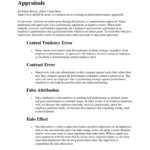The working atmosphere refers to the overall emotional and psychological climate perceived by employees in a workplace. It is a key determinant of job satisfaction, employee performance, and organizational identification. The quality of interpersonal relationships and collaboration among colleagues plays a central role in how the atmosphere is perceived—whether positively or negatively.
Key Influencing Factors
Several individual and structural factors shape the working atmosphere:
-
Supervisory behavior – for example, the leadership style of team or department heads
-
Employee relationships – including mutual trust and acceptance among colleagues
-
Information access – such as opportunities for employees to ask questions and receive feedback
-
Opportunities for participation – involving the degree of decision-making power and autonomy employees have
-
Work organization – including the structure and flow of work processes
-
Company contributions – such as wages, incentives, or employee benefits
-
External working conditions – like stress levels, break policies, or noise exposure
Organizational Impact
The working atmosphere significantly affects:
-
Job satisfaction, especially in how employees perceive their daily conditions
-
Commitment to performance, particularly their motivation to go beyond the minimum
-
Identification with the company, which influences long-term engagement and loyalty
In organizational psychology, the term organizational climate is often used synonymously, extending beyond businesses to institutions like schools and hospitals.
Measurement and Evaluation
Understanding how employees perceive the working atmosphere is crucial for effective HR and organizational development. This can be assessed through:
-
Employee interviews
-
Team meetings or feedback sessions
-
Surveys and questionnaires
A positive working atmosphere contributes to employee retention, reduced absenteeism, and higher productivity, making it a strategic focus area for HR leaders and managers.
« Back to Glossary Index





![15 Employee Offboarding Templates That Save Hours of HR Time [Free Downloads] 15 Employee Offboarding Templates That Save Hours of HR Time [Free Downloads]](https://i1.wp.com/www.hrcloud.com/hubfs/Header.png?w=150&resize=150,100&ssl=1)
